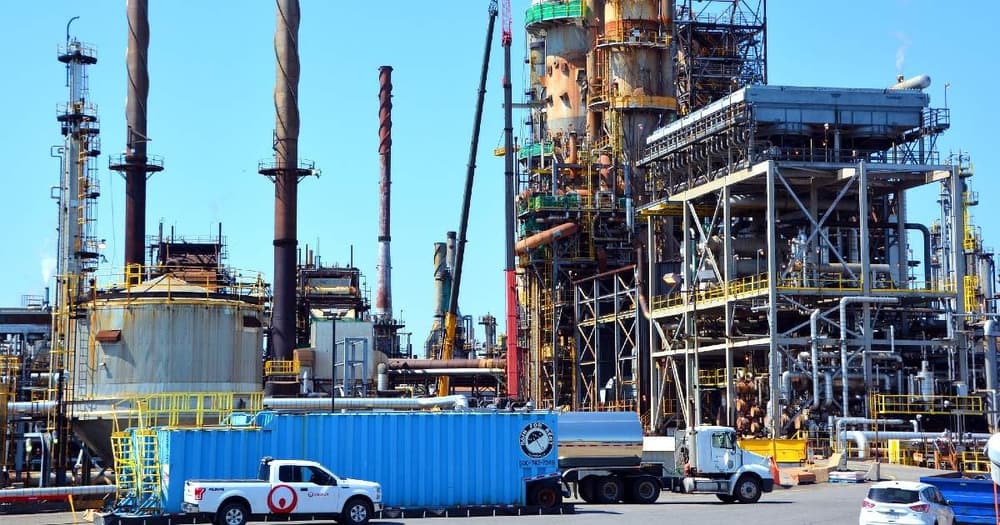Are you good with your hands? Mathematically inclined? Detail-oriented? If so, you have what it takes to pursue a career in welding!
Or perhaps you are already heading down that career path and want to look for ways to diversify your opportunities.
Either way, the oil and gas industry relies on welders with specific skill sets necessary to carry out the required task to maintain pipelines, rigs and equipment.
Welding involves so much more than wielding a torch - different aspects of the oil and gas industry need different types of welders.
Read on if you’re interested in learning about the different welding positions available in this industry as well as how to become a welder:
What Do Welders Do?
Simply put, a welder fabricates and puts together metal parts by using various machines that create intense heat.
In the oil and gas industry, welders are employed to work on rigs and operate in the oil fields. They are involved in the fabrication and construction of oil and gas equipment as well as major production facilities.
The typical duties of a welder in the oil and gas industry include selecting materials to be cut and joined, following engineering instructions, using the most suitable welding methods for the job and inspecting and test cuts and joins.
Welders must also use suitable safety equipment and be extremely mindful of the risks associated with this career. Common safety hazards include:
- Electric shock
- Fumes and gasses
- Fire and explosions
- Injuries due to insufficient personal safety equipment (PPE)
- Physical hazards (eye damage, cuts, burns, etc.)
Welding provides many entry-level job opportunities of which individuals can fulfill with only a high school diploma or equipment. Many entry-level welders go on to earn a professional certification to expand their career and earning potential.
Certifications can be obtained through vocational schools, college and private programs - the programs often include on-the-job training.
Welders typically work full-time and often have to work overtime as well, which can be up to 10 hours a day. Most work outdoors and in confined spaces, on scaffolding and even in inclement weather.
Those with higher skill levels, and a willingness to relocate, are at an advantage to gaining solid employment.
If welding is a career path that interests you, or you are looking to advance your welding career, here are eight positions you should consider in the oil and gas industry:
1. B Pressure Welder
B Pressure Welders are employed by the oil and gas industry to weld or cut metals used in the construction of pipes as well as on boilers and pressure vessels. This position can also involve welding parts, tools, machines and equipment.
2. Pipeline Arc Welder
Pipeline Welders use an electric arc to melt and fuse metals at the welding point - this is actually the most common welding technique used in the industry. The electric arc is created by using two metal clips that create the arc between an electrode and the base material.
3. Drilling Platform Welder
Drilling Platform Welders work on oil platforms performing welding tasks. These large structures are used to drill wells to extract and process oil and natural gas. They may be fixed to the ocean floor but can also be built to float on water.
4. Rig Welder
Routine repairs and new metalwork on oil rigs are carried out by Rig Welders. Some rig welders are positioned permanently on an oil rig while others are flown around when repairs are needed.
5. Fabrication Welder
Using an electric arc, as well as MIG (metal inert gas) welding techniques, Fabrication Welders design, create and join various types of metal structures. Most projects involve fusing individual parts, creating frames for large structures and building or repairing heavy equipment.
6. Production Welder
Production Welders typically work in a variety of manufacturing and construction industries and can work indoors, outdoors and even underwater.
7. Welding Engineer
The position of Welding Engineer is more hands-off than typically welding positions. Welding Engineers solve engineering problems, analyze failures and eliminate defects. They also develop welding procedures.
A Welding Engineer is likely to have experience with a variety of metals and is familiar with welding techniques including oil and underwater pipelines.
8. Aluminum TIG Welder
Aluminum TIG Welders employ an advanced type of welding known as the Gas Tungsten Arc to weld rods onto stainless steel or aluminum. TIG Welders hold the welding rod in one hand and the electric torch in the other hand to melt the rod and surface at the same time.
Looking for More?
Energy Job Shop has you covered!
We are your one-stop-shop for all of Canada and the United States’ hot leads when it comes to oil and gas opportunities.
Check out all of our job listings for welders in Canada and the United States.

